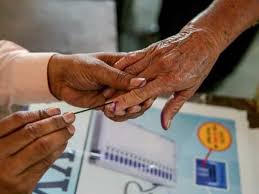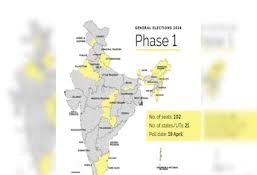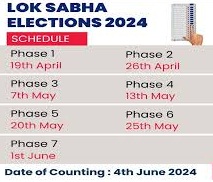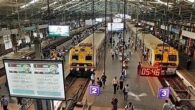
Lok Sabha election 2024 Phase 1: on 19th April 2024
During the Lok Sabha elections, Phase 1 typically involves voting in select constituencies across various states or regions. Since I don’t have access to real-time data, I can’t provide specific details about the constituencies or states involved in Phase 1 of the Lok Sabha elections in 2024. However, I can give you an idea of what typically happens during this phase:
- Voting in Selected Constituencies: Phase 1 usually includes voting in a subset of constituencies spread across different states or regions of the country. The constituencies selected for Phase 1 voting may vary based on factors such as geography, logistics, and security considerations.
- Campaigning: Prior to voting day, political parties and candidates will conduct extensive campaigning in the constituencies scheduled for Phase 1. This campaigning includes rallies, roadshows, public meetings, and door-to-door canvassing to woo voters and garner support for their respective candidates.
- Security Arrangements: Security arrangements will be beefed up in the constituencies where voting is scheduled to take place in Phase 1. This includes deployment of police forces, paramilitary personnel, and other security measures to ensure a peaceful and orderly voting process.
- Election Commission Guidelines: The Election Commission of India will issue guidelines and instructions for Phase 1 of the elections, ensuring compliance with the electoral code of conduct by political parties, candidates, and election officials.
- Polling Stations: Polling stations will be set up in each constituency where voting is scheduled to take place in Phase 1. These polling stations will be equipped with electronic voting machines (EVMs) and other necessary infrastructure for voters to cast their ballots.
- Voter Turnout: Voter turnout during Phase 1 of the Lok Sabha elections will vary depending on factors such as the level of enthusiasm among voters, the effectiveness of voter awareness campaigns, and local issues influencing voter sentiment.

The scale of the Lok Sabha elections in India is indeed staggering, and the meticulous preparations by the Election Commission reflect the importance of ensuring a smooth and fair electoral process. With such a large number of eligible voters, logistical arrangements become paramount to ensure that everyone has the opportunity to cast their vote.
Enhanced surveillance measures are crucial to maintaining the integrity of the elections and preventing any attempts at manipulation or fraud. This includes measures such as deploying security personnel, monitoring polling stations, and using technology to track and prevent any irregularities.
As India embarks on this democratic exercise, it’s a reminder of the strength and vitality of its democratic institutions and the commitment of its citizens to shaping the nation’s future through their participation in the electoral process.

The comprehensive blueprint unveiled by the Election Commission of India for Phase 1 of the Lok Sabha elections in 2024 highlights the enormity of the electoral process. Here are some key points:
- Geographical Coverage: Voting will take place in 102 parliamentary constituencies spread across 21 states and Union Territories, reflecting the nationwide scope of the elections.
- Voter Turnout: The Election Commission reports an impressive approx 16.0 crore eligible voters for Phase 1, underlining the significant participation expected in shaping the country’s political future.
- Logistical Arrangements: A network of 1.84 lakh polling stations has been prepared to facilitate voting, ensuring accessibility for voters across diverse regions. Additionally, the deployment of 18 lakh personnel aims to guarantee the smooth conduct of the electoral process.
- Nomination Deadline: The deadline to file nominations for Phase 1 voting in 20 states and Union Territories was March 27, indicating the completion of the initial procedural steps leading up to the elections.












Leave a Reply